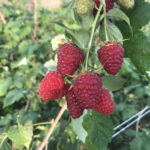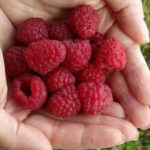Raspberry variety Penguin
Everyone loves penguins. Adorable, though flightless, seabirds. They cause an involuntary smile, only kind, positive emotions. And of course, there is no question why this is the name of a short, but beautiful, "stately" new raspberry variety. Now another raspberry Penguin has appeared on the market - the Royal Penguin. Unclean sellers are actively trying to sell it as an improved one. Well, you might as well rename, for example, a regular potato to a Royal Potato. This can be called the fashionable word "fake" now. But how long the Penguin settled on our plots and how he is able to surprise summer residents and gardeners - more on this in the article below.
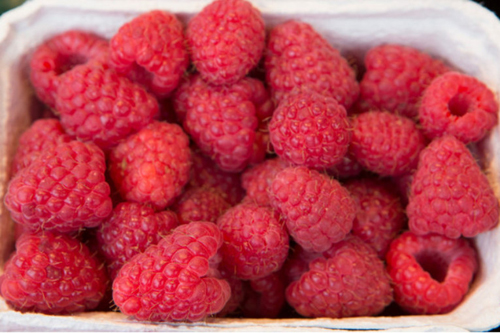
History of creation
This variety of remontant raspberries was bred by Russian breeders - the legendary academician of the Russian Academy of Agricultural Sciences I.V. Kazakov, his student S.N. Evdokimenko and V.L. Kulagina. Selected from sowing seeds obtained from complex stepwise hybridization of interspecific parental forms. The breeders, as a result of hybridological analysis of the progeny of remontant forms, revealed the absence of a genetic barrier in the inheritance of the main economically valuable traits. This made it possible to combine the necessary qualities of raspberries in one genotype and, therefore, to breed remontant varieties with the optimal expression of these traits. The emphasis in breeding the Penguin was made primarily on an early, amicable ripening period and a compressed period of fruiting. A variety was needed that was suitable for full-fledged cultivation in the northern regions of the country, in particular in Siberia, the Urals and the Far East. And also the variety had to have valuable commercial characteristics, namely, a really strong stem and suitability for mechanized harvesting. Russian patent No. 4182 was issued in 2008. The patent expires in 2038. The copyright holder is the Federal State Budgetary Scientific Institution "All-Russian Institute of Selection and Technology of Horticulture and Nursery".
Description
Repaired red-fruited variety for universal use with a very early ripening period. One of the earliest repairers on our market. Moreover, not only among domestic, but also among the presented foreign varieties. In the southern regions of the country, this raspberry ripens from the end of June, in the center of Ukraine from the second decade of July. In the Moscow region and the Leningrad region, it begins to bear fruit from the beginning of August. The plant gives off almost the entire crop in a couple of months, in August-September. A small part of the Penguin fruit can ripen until mid-October.
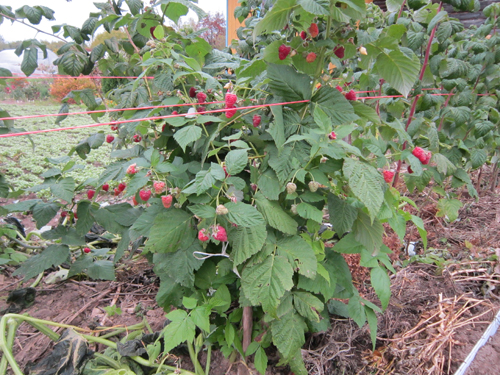
The bush is of medium vigor, stocky, compact, with an open habit. Shoots are medium and low, with a height of 1.1-1.3 meters, less often up to 1.6 meters. They are erect, with shortened internodes, medium in thickness, generally up to 2 cm, strong and resilient. Annual stems are juicy green with a strong waxy coating and medium density pubescence, prickly. The spines are not aggressive, short, greenish and pale purple in color with a brownish base, slightly curved downward. The spines are numerous, but mainly concentrated in the lower and middle part of the stem. Shoot-forming ability is average - raspberries form 4-6 shoots per season, but rather actively "bush", short lateral shoots from the main stem grow in the lower part. Laterals (lateral fruit branches) are short, slightly pubescent, with a medium-rich waxy coating. There is a direct dependence of the height of the Penguin's shoots on the number of stems left in the bush. The variety produces little root growth.
Leaves are medium in size, oval, straight and slightly curled, slightly wrinkled. They are green in color, whitish below, medium pubescent, denticles along the edges of the leaves are rare, moderately pointed. Abundant flowering, amicable, begins in May-June. The flowers are white, medium-sized - about 1.5 cm.
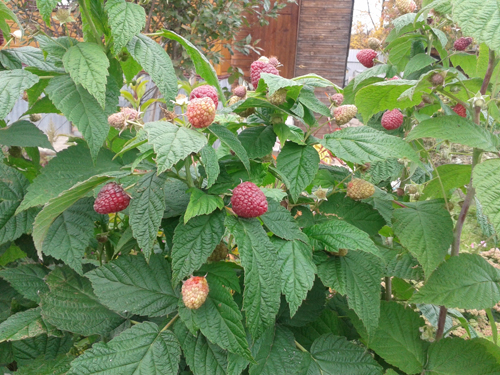
Raspberries are large, mostly 4-5 grams, but can often gain weight up to 6-7 grams.They are homogeneous, dense, really spectacular and beautiful, one-dimensional, without significant deformations, good presentation. Fruits are elongated, rounded-conical, wide, on average 2.5-3.5 cm long, 2-2.5 cm wide. Bright red, deep crimson when fully ripe, matte, with a slight bloom , slightly pubescent. Drupes are small, aligned, tightly interconnected. The seeds in them are not large. Penguin fruits are well separated from the fruit, with a dry separation (do not flow or deform). After ripening, they can hang on the bush for up to 3, less often 5 days without loss of marketability and decay. But it is advisable to pick the berries every other day, maximum two. Then their appearance and quality will be excellent. Also, the fruits practically do not crumble from the bush, if they are not picked, they dry up hanging on the stalks. Berries are resistant to sunburn - they are practically not baked in summer.
But the frankly weak point of the variety, which does not allow it to become one of the most welcome guests on our sites, is its taste ... Often the berries are not tasting at all: fresh, herbaceous, there is simply no taste. Added to this is sometimes a very pronounced sourness. But the sugar content is at a rather low level, when consumed, it sometimes seems that the berries are artificial. The pulp of the fruits is juicy, but the aroma is also unsaturated, rather weak, vaguely reminiscent of raspberries. But what should be noted - the taste of the Penguin can change. And change for the better. The variety reacts positively to the introduction of complex potash fertilizers after the ovary and during the filling of berries. In the NPK formula, K is potassium. In simple terms, the taste and size of the fruit largely depends on it. And its value should be higher than the other two in the NPK formula. There are also many other types of potash fertilizers on the market (potassium monophosphate, potassium (potassium) nitrate, etc.). And yet - ordinary wood ash is also a source of potassium, as well as a natural fungicide. The second condition for a set of taste is planting only in places well-lit by the sun. And if these not too difficult conditions are observed, some gardeners manage to collect berries from this variety, albeit not excellent, but normal in taste and sugar, quite edible berries.
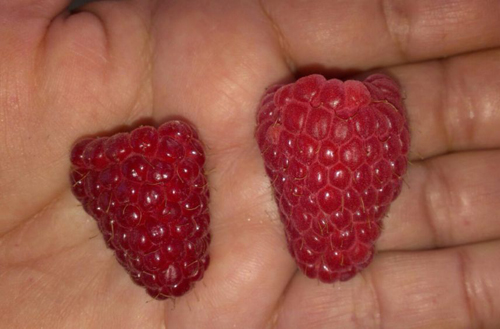
Tasting evaluation of fresh Penguin berries by experts - 3.7 out of 5 possible points. According to patent data, the sugar content is 3.1%, the acid content is 1.6%, and the vitamin C content is 62 mg /%. The content of chemicals in raspberries (according to research for 2008-2010, carried out by one of its creators - S.N. Evdokimenko): RSV (dissolved solids) 8.2%, sugar 5.0%, titrated acids - 1 , 82%, vitamin C - 53 mg%, sugar: acid - 2.69.
In one of his scientific works, Evdokimenko openly writes: "However, the problem of obtaining remontant forms of raspberries with high fruit quality indicators has not yet been solved." This causes indisputable respect for the breeder, who did not begin to compose false, laudatory fables about his varieties, but outlining the real state of affairs. And showing what is for what and what to work on further.
Penguin's yield is good, especially given the overall low growth of the bush. It is 1.5-2.5 kg per bush and, accordingly, 9-11 t / ha. The zone of autumn fruiting in the variety makes up most of the shoot, 50−70 cm long. This raspberry is predominantly of the autumn type, growing for 2 crops as a tutimer is not of interest and expediency. The cultivation technology provides for mowing the above-ground part "to zero" in late autumn or early spring.
The fruits are used for fresh consumption and all types of processing (preserves, jams, marshmallows), drying and freezing. Thanks to early amicable ripening, strong stem and low growth, as well as good commercial quality of berries, Penguin is a promising commercial variety. And to all the pluses is added the suitability for mechanized harvesting. This is what I.V. Kazakov and his colleagues tried to achieve. And they did it in an excellent way. And flaws in taste and aroma are already secondary. It's a pity, of course ... Our hero was created primarily as a technical one.The fruits have normal shelf life and transportability, which also contributes to successful trade in fresh berry markets.
The penguin has a complex resistance to fungal diseases. An urgent problem is the creation of varieties resistant to gray rot (botrytis). Interestingly, the varieties with the genoplasm of hawthorn raspberries differ in the increased resistance of berries to decay. Our hero belongs to them. So you don't have to worry about outbreaks of gray rot. But already it is moderately resistant to root rot. The plant is little affected by aphids and has resistance to the infection that it carries - the RBDV virus (raspberry dwarfism). It is rarely affected by the raspberry mite, even in dry and hot weather. Shoots withstand negative weather conditions, the bush does not fall apart even in strong winds.
Strengths
- Beautiful, large, even berries. You can even put them on your fingers. Children will especially appreciate it.
- Strong, low, erect shoots. The penguin is really a standard type, one of the best in its class for this indicator. You can safely dispense with cultivation without trellis and supports.
- A low bush, densely covered with berries, in addition to material benefits, also brings aesthetic pleasure, serves as an adornment of the garden and the envy of neighbors.
- The variety is resistant to unfavorable conditions, easy to grow, well adaptable.
- One of the earliest ripening terms among remontants with a friendly return of fruits.
- Quite a short period of fruiting. Raspberry yields almost completely even in the suburbs.
- Resistance to major diseases and pests.
- The versatility of berries and good productivity. When harvested, the separation is dry, without effort, the Penguin fruits can hang on the bush for up to 5 days without significant loss of marketability. Do not crumble when ripe.
- Suitable for both amateur cultivation and commercial, with the creation of large plantings.
- Suitable for mechanized harvesting.
- The compactness of the raspberry bush allows you to save on row spacing, allowing you to plant more plants on the site.
Weak sides
- With a lack of nutrition or watering, the berries of the variety become more rounded, lose size.
- Simple, bland taste with low sugar content. Often in the berries of the Penguin, sourness is strongly manifested.
- Faint, unexpressed aroma.
- Many people do not like a bush that is too low, from which it is inconvenient to pick berries. You often have to bend over and sit down.
- Frequent, though not too aggressive thorns.
- Medium drought tolerance. Regular watering is required, especially at the time of fruiting raspberries.
- Over time, the shoots become shorter and shorter, stubbing and replacing with new, young plants is necessary.
Author: Maxim Zarechny.




